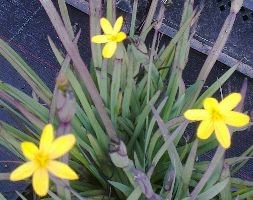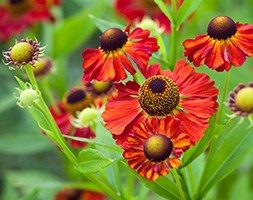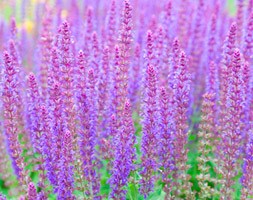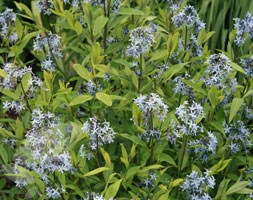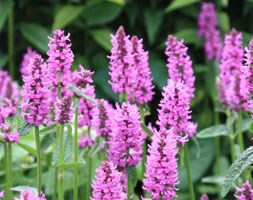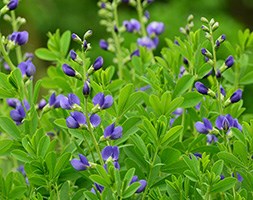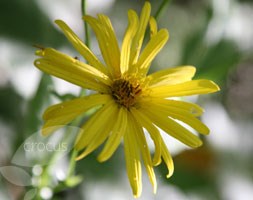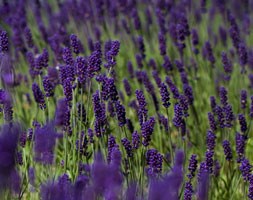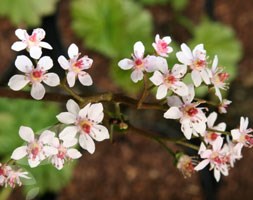Price reductions at Crocus
by Sarah - June 19th, 2014.Filed under: Crocus, Price Reductions.
Reduced lines at Crocus
Sisyrinchium californicum ‘Yellowstone’ (golden-eyed grass) was £5.99 now £4.99
Position: full sun Soil: poor to moderately fertile, reliably moist but well-drained, neutral to slightly alkaline soil Rate of growth: average to fast-growing Flowering period: June to August Hardiness: frost hardy (may need winter protection) Cheerful, bright yellow, open star-like flowers above clumps of sword-shaped, grey-green leaves. This semi-evergreen, summer-flowering perennial is perfect for a sunny, rock or gravel garden. Best planted in well-drained, neutral to slightly alkaline soil, although short-lived it self-seeds freely. Garden care: Lift and divide large colonies in spring. It self-seeds freely, so if you do not want it to spread too quickly, cut off the spent flowers before they set seed.
Helenium ‘Moerheim Beauty’ (sneezeweed) was £8.99 now £5.99
Position: full sun Soil: fertile, moist but well-drained soil Rate of growth: average Flowering period: June to August Hardiness: fully hardy A succession of dark copper-red daisy-like flowers up to 8cm (3in) across with prominent, dark brown centres from June to August. This beautiful sneezeweed is ideal towards the back of a sunny, moist but well-drained border. It makes a wonderful companion for ornamental grasses and yellow, white or earth-toned flowers. Bees and butterflies love it and it makes an excellent cut flower too. It is a super plant which has been awarded the prestigeous Award of Garden merit by the Royal Horticultural Society. Garden care: Heleniums are versatile plants that love plenty of sunsh sunshine and moist soil. They rarely suffer from pests or diseases, however young plants do need to be protected from slug attack. Tall varieties need to be staked. To encourage the plant to repeat flower deadhead back to side shoots that have flower buds emerging. Cut back by half after flowering to help prevent mildew. Cut down to the ground in late winter. Every two or three years divide the plants in spring to keep them in top condition. When replanting add loads of well-rotted organic matter to the soil to feed them and keep them moist.
Salvia nemorosa ‘Ostfriesland’ (Balkan clary) was £7.99 now £5.99
Position: full sun Soil: light, moderately fertile, humus-rich, moist but well- drained soil Rate of growth: average Flowering period: July to September Flower colour: intense violet-blue Other features: attractive to butterflies and bees Hardiness: fully hardy Slender spires of intense violet-blue flowers from July to September above clumps of wrinkled, mid-green leaves. This compact form of salvia is perfect for adding a splash of colour at the front of a well- drained herbaceous border or gravel garden. Coping well in sun or light dappled shade, the violet-blue blooms are a magnet for butterflies and bees. Garden care: To prolong flowering remove the flower spikes as soon they start to fade. Apply a generous 5-7cm (2-3in) mulch of well-rotted garden compost or manure around the base of the plant in spring.
Amsonia tabernaemontana (amsonia) was £7.99 now £5.99
Position: full sun or partial shade Soil: moist but well-drained soil Rate of growth: average Flowering period: May to July Hardiness: fully hardy Dense clusters of star-like, ice-blue flowers appear from late spring to midsummer on graceful, arching stems above long, dark green leaves. A lovely, clump-forming perennial that looks good in the middle of a sunny border. Garden care: Divide congested plants in spring. Cust back straggly plants by a third to a half after the first flush of flowers have faded.
Stachys officinalis ‘Hummelo’ (salvia) was £7.99 now £5.99
Position: full sun or partial shade Soil: well-drained, moderately fertile soil Rate of Growth: average Flowering period: June to September Flowers: pinky- purple Other Features: flowers attract bees Hardiness: fully hardy This clump-forming perennial is mainly grown for the rose-lavender flowers which appear in summer. These flowers are held on upright spikes above the rosettes of dark green leaves and act as a magnet for bees. It provides great groundcover which is ideal for supressing weeds and filling gaps at the front of the border. Garden care: Removing the spent flowers will encourage more to form and a light trim after flowering will help keep the plant tidy. Lift and divide large clumps in early spring.
Baptisia australis (false indigo) was £7.99 now £5.99
Position: full sun Soil: deep, moist but well-drained, neutral to acid soil Rate of growth: average Flowering period: June Flower colour: dark indigo-blue Other features: the flowers are followed by dark grey seed- pods; mid- to deep green leaves Hardiness: fully hardy Upright spikes of dark indigo-blue, pea-like flowers in June, often flecked white or cream. False indigo is perfect for a well-drained border or a dry, sunny bank. Resist the temptation to cut the plant back in autumn since the seed-pods and slender stems look wonderful frosted in the winter garden. Garden care: Lift and divide large colonies in early spring
Silphium perfoliatum (cup plant) was £7.99 now £5.99
Position: full sun or partial shade Soil: moderately fertile and moist, with neutral to alkaline pH Rate of growth: average Flowering period: July to September Flower colour: yellow Hardiness: fully hardy The tough, erect stems soar upwards in spring and are covered by large leaves that fuse together at their bases to form a sort of “cup” (hence the common name). This is a very attractive feature after rain as they often hold glistening balls of water. In mid summer clusters of bright yellow daisies crown the plant. These are airy enough not to dominate the surrounding planting, even though they can reach 2.5m tall. A native of tall grass prairies, meadows, thickets and stream peripheries in North America, this plant has a deep and extensive root system which makes transplanting difficult, so make sure you have the right spot for it. It will attract birds and butterflies to the garden and will exude an aromatic resin if you crush the leaves and stems Garden care: Divide congested plants in spring.
Lavandula angustifolia ‘Hidcote’ (lavender) was £7.99 now £5.99
Position: full sun Soil: moderately fertile, well-drained soil Rate of growth: average Flowering period: July to September Hardiness: fully hardy A compact form of the popular English lavender, named after plantsman Laurence Johnston’s famous Arts and Crafts garden in Gloucestershire. It produces dense spikes of fragrant, deep violet summer flowers above slender, aromatic, silvery-grey leaves. It is possibly the best lavender for edging paths and borders and the aromatic foliage perfumes the air if you brush against it. It also works well in a gravel garden, or clipped into a formal sphere for a contemporary look. The flower-spikes are highly attractive to bees and other nectar-loving insects. Garden care: Cut back the stalks after the flowers have faded. Carefully trim back in April, taking care not to cut into old wood.
Darmera peltata (umbrella plant) was £7.49 now £5.99
Position: full sun or partial shade Soil: moist or boggy soil Rate of growth: slow-growing Flowering period: April – June Flower colour: white to bright pink Hardiness: fully hardy One of the stars of The Chelsea Flower Show in 2008, where Tom Stuart-Smith used it extensively in his ‘Best of Show’ garden. This plant has big, circular leaves that pack a big architectural punch. The leaves can grow up to 60cm across and are held on stalks that can reach 1m tall and they help form very attractive dome- shaped plants. In autumn, before they die down, they will often turn bright shades of red. Rounded clusters of white to bright pink flowers appear above the foliage in late spring. Garden care: It prefers a reliably moist soil, but can slowly adapt to drier conditions. Although the plant is fully hardy, the flowers may be scorched by late frosts, so avoid planting in an east facing bed. Divide over-lar ge clumps in spring.







